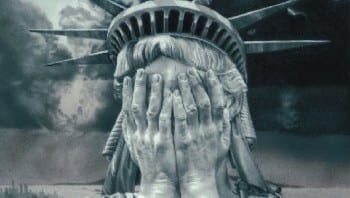OpEds
Daniel Wirt
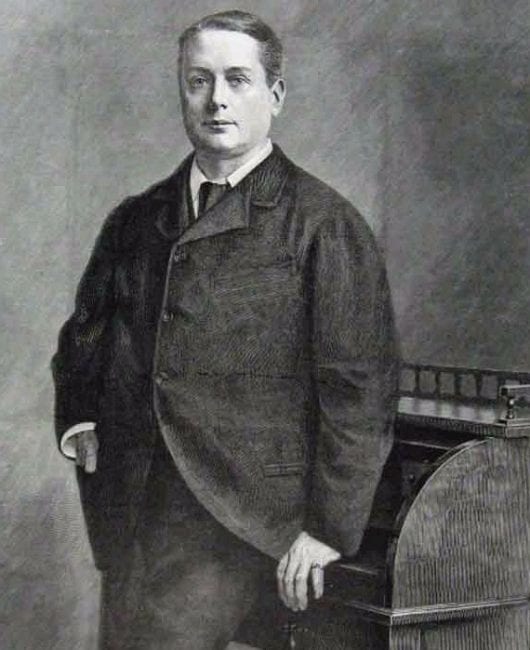
Archibald Philip Primrose, 5th Earl of Rosebery, first Earl of Midlothian and later British Prime Minister. Among many other distinctions and privileges, “Rosebery was one of the last undergraduates of Christ Church who wore the gold tassel, known by the name of ‘tuft’, which was the distinguishing mark of noblemen and the sons of noblemen.” Despite fleeting lapses into a semblance of a populist tribune, Rosebery, eccentric by design, incarnated the essence of all haughty toffs.
Physicians gravitate to certain cases of disease, usually because they represent exceptional, classic examples of known pathophysiology for teaching purposes, and sometimes because individual cases or small groups of cases provide clues to the underlying pathophysiology of poorly understood disease states. Examples of this process of case reporting leading eventually to detailed pathophysiologic understanding abound in the history of medicine; for example, the thread of knowledge extending from case reports of acromegaly to the eventual discovery of pituitary adenomas producing excess human growth hormone and the biochemistry and physiology of growth hormone.
I am submitting the following case to the Annals of Imperial Sociopathy as an outstanding case for teaching purposes. The role of academia in the Military-Industrial-Media-Academia complex is well known. The academic institutions of the imperialists produce the compliant workers and propagandists for Western (Atlanticist) hegemonic imperialism, necessary to justify and maintain the militarism and fascism inherent in and required by late-stage capitalism. These academic institutions and their associated think tanks produce thoroughly indoctrinated courtiers of the corporate oligarchy/plutocracy which is the controlling force behind the puppet politicians and the governments in the United States and the several lesser imperialist lapdogs of the U.S. In exchange for the juicy bones thrown to them by the plutocracy, these courtiers and puppets are faithfully compliant, deviating from the script only rarely — and the punishment for deviation is severe.
Here is an outstanding case of bringing up baby courtiers of imperialism, not at Harvard or Yale or Brown University in the U.S., but in Great Britain: bringing up baby at the University of St. Andrews in Perfidious Albion. Why is this an example of imperial sociopathy?
Sociopaths have the capacity to harm others without being restrained by a sense of conscience or with a defective sense of conscience. They variably lack empathy. They employ several defense mechanisms to avoid taking responsibility for their harmful behavior, including denial, rationalization and projection. They are unburdened or insufficiently restrained by conscience and empathy because of these defense mechanisms. The lower class of sociopaths includes the street thug who mugs old ladies, snatching their purses, knocking them down, causing femoral neck fractures, even blaming the victim (“if she had just given me the dollar I asked for… but she called me a thug…”). The upper class sociopaths include imperialist thugs trained at prestigious academic institutions in the West.
In order to play French resistance fighter, one must have the proper accoutrements.
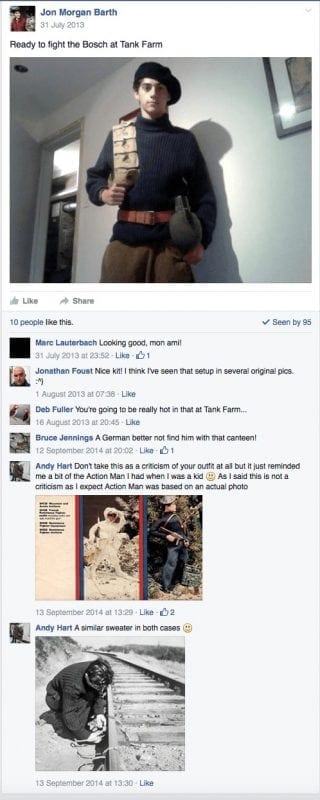
M. Jon Morgan Barth play-acting maquisard — French Resistance Fighter — in 2013. What would real French Maquis — like Jean Moulin — think of M. Barth’s 2015 essay disparaging the anti-fascist fighters in the Donbass region of Ukraine? (See Text Below)
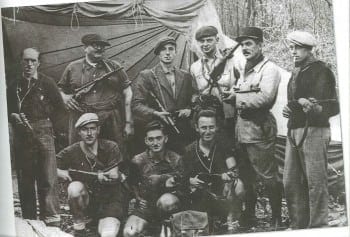
Real French Maquis, tactically modern guerrillas: their backgrounds were diverse, with a predominance of leftwing militants, anarchists, and young men fleeing the Nazis’ Obligatory Work Service (STO). Their formal name was FFI, or Forces Françaises del l’Interieur for “French Forces of the Interior”. Of Note: “Some Maquis bands that operated in southwest France, were composed entirely of left-wing Spanish veterans of the Spanish Civil War.” (Further historical documentation of the important role that foreign volunteers have played in the fight against fascism.)
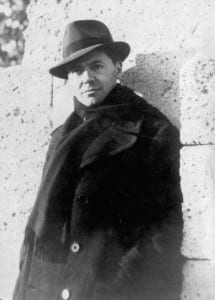
Jean Moulin (1899 – 1943), leader of the National Council of the French Resistance. Codenamed ‘Max’, he was arrested by Klaus Barbie of the Gestapo in 1943 and died in custody after weeks of torture.
Observe imperialist shills-in-training at one of those academic institutions — the University of St. Andrews in Scotland, members of the St. Andrews Foreign Affairs Society, writing for their student publication, Foreign Affairs Review (http://foreignaffairsreview.co.uk/about/). There are numerous specimens here to examine under the dissecting microscope — young courtiers of imperialism in intellectual short-pants tottering along on their two-wheelers with training wheels, earnestly learning their Orwellian craft.
For example, go to The Foreign Affairs Review website and put “Putin” in the search engine. One is treated to the following (and these are just on the first page of the search results):
[dropcap]M[/dropcap]y initial response to these pieces is to refute the errors of omission and commission, the claims unsupported by evidence and counter to abundant evidence, the outright falsifications —- but to do a comprehensive job of this would require a lean 10,000 word article. Theirs is an amazing job of intellectual laziness and dishonesty. These short essays are a confused tangle of faulty premises and non sequiturs. No doubt these students pleased their professors, however, regurgitating the standard, worn falsifications of the western Russophobes and anti-communists, in that long line of liberal fascists reacting at a spinal cord reflex level to any socialist ideology threatening the hegemony of their viciously exploitative capitalism, mandatorily married to imperialism and fascism like a conjoined twin joined at the head, chest and abdomen. Virtually every sentence is a monument to intellectual dishonesty and disregard for evidence, a Mobius strip of Orwellian Doublethink. I’ll forego the detailed deconstruction of the gems cited above and just mention a few of the clinkers:
-“Nonetheless, the tentative winding down of the conflict in Ukraine and the simultaneous ramping up of conflict in Syria should be seen as presaging the final desperate chest-thumping of the Putinist ideology… War and propaganda are the political solutions that Putin provides to the country’s economic problems. For most of his fifteen years in power, Putin has been able to garner support by creating the perception of Russia as locked in inextricable conflict with the West. Cultivating a siege-mentality has enabled the Kremlin to present sanctions and a declining economy as an international conspiracy against Russia… With a tumbling economy and a violent quagmire in Syria, Putinism may finally run out of money and options.”
-Characterization of the response to Pussy Riot’s desecration of an Orthodox Church as evidence of “increasing repression”. No mention of the massive harm done to the Russian people in multiple spheres after the dissolution of the Soviet Union, engineered by Gorbachev, in the Yeltsin era of grand theft by predatory capitalists — Yeltsin, a corrupt, alcoholic stooge for US imperialism (for example, see here, here, here and here). Then there is the obligatory, standard demonization of Stalin with no context. “Sixty years ago Stalin died, putting an end to twenty-seven years of terror, disappearances and arbitrary killings.”
-And the uncritical propagation of the Holodomor (deliberate famine) myth, a proven hoax to a high degree of historical certainty. “Since 2006, Ukrainians have commemorated the Holodomor on the fourth Saturday of November. This year will mark 82 years since the 1932-33 famine that occurred, in the words of Alexander Solzhenitsyn, ‘without drought and without war.’ The commemoration comes with the knowledge that the devastating famine was more than a naturally occurring event – it was a deliberate policy of the Stalinist regime to exterminate the Ukrainian population. The Ukrainian government recognises that the famine was caused by state practices and this view has been widely accepted by historians. More than two thirds of the Ukrainian public subscribe to this view of history, according to a poll in October 2013 carried out by the Ilko Kucheriv Democratic Democratic (sic) Initiatives Foundation and the Ukrainian Sociology Service.”
It is not surprising that these students are content with simply parroting and regurgitating the lies of rabidly Russophobic Ukrainians, ideological descendants of Ukrainians who collaborated with the Nazis during World War II, and the falsifications of historians such as Robert Conquest and Timothy Snyder. After all, these are not history students — they are not interested in how an appropriate level of historical certainty is derived from the weight of PRIMARY source evidence. As shills-in-training for imperialism, they are not interested in historical accuracy or context — they are interested in propagating the most effective lies to maintain the momentum of mass brainwashing, as required by the masters of the corrupt system to which they aspire to become privileged and comfortable members.
The test of intellectually honest historians is reliance on evidence and data from PRIMARY sources to support an appropriate level of historical certainty. Conquest repeatedly failed the test. Like Timothy Snyder, Robert Conquest was not intellectually honest in his use of sources, and thus produced falsifications, not history. Conquest was a political prostitute, in the service of some very unsavory anticommunists — a very prolific imperialist shill, an Energizer Bunny serving the imperialists. A good student would check all the source footnotes of Conquest and Snyder (which would require fluency in Polish and Russian). In fact, Dr. Grover Furr has done just that and published a book about it, “Blood Lies: The Evidence that Every Accusation Against Joseph Stalin and the Soviet Union in Timothy Snyder’s Bloodlands is False”. What Dr. Furr has found is very revealing. Dr. Furr has done an incredible job peeling away the scandalously cynical crust of lies deforming the history of Russia and Stalin, not to mention staining the very idea of socialism.
I seriously doubt if any of the St. Andrews students writing these shoddy essays would have the intellectual curiosity and integrity to even read “Blood Lies”, let alone have the gonads to challenge the imperialist propaganda line — I’m sure they have a keen sense of which side their bread is buttered on. Thus, these “tuft-hunters” of St. Andrews will probably never understand the lies vs the truth regarding: the Famine of 1932-33, the “Polish operation”, the “Great Terror”, the Molotov-Ribbentrop Pact, the “Soviet Invasion of Poland”, the “Katyn Massacre”, the Warsaw Uprising and “Stalin’s Anti-Semitism”. Their livelihoods require that they regurgitate the lies and disregard the truth. Historical truth (via intellectually honest evaluation of primary source evidence) need not apply. “…but at the length truth will out” (1-4)
[dropcap]B[/dropcap]ut the sociopathic pièce de résistance among these intellectually shoddy essays is that of Jon Morgan Barth, titled “Microcosm of Radicalism: Foreign Volunteers in Donbas”
(http://foreignaffairsreview.co.uk/2015/10/microcosm-of-radicalism-foreign-volunteers-in-donbas/ and copied in the sidebar below). This is truly an epitome, a perfect teaching case demonstrating all of the defense mechanisms of denial, rationalization and projection in the service of imperial sociopathy. Barth argues that the foreign volunteers fighting in Donbass pose a terrorist threat to their home countries and deserve to be prosecuted in their home countries. He is dismissive of the claim that the struggle in Donbass is against fascist aggression, without providing any evidence about the etiology or nature of the conflict or identities of the fighters. His Russophobia is evident. He is also dismissive of the parallel between the international volunteers in Donbass with the international volunteers assisting the Republican side against the fascists in the Spanish Civil War — I get the distinct impression that he does not view the latter as a noble effort. He certainly does not mention the international volunteers assisting the Republican side against the fascists in the Spanish Civil War in any positive light or context. Ironically, if Barth had studied his history with the same care that he devoted to his French Resistance costume, he would know that “Some Maquis bands that operated in southwest France, were composed entirely of left-wing Spanish veterans of the Spanish Civil War.” In other words, foreign volunteers helped the Republicans fight the fascists in the Spanish Civil War, and Spanish volunteers returned the favor by volunteering in France to fight the Nazis — further historical documentation of the important role that foreign volunteers have played in the fight against fascism — a role that continues to the present (in Donbass…).
Sidebar: Read here M. Barth’s essay, in toto. Click the bar below. IF FOR ANY REASON YOU CANNOT OPEN THE BAR WITH JON MORGAN BARTH’S ARTICLE, PLEASE READ IT BELOW, ON PAGE 2.
MR. MORGAN BARTH'S COMPLAINT —EXAMINE IT HERE
Microcosm of Radicalism: Foreign Volunteers in Donbas
by JON MORGAN BARTH on Oct 22, 2015
With the conflict in Ukraine seemingly settling into a frozen state, countries will have to be vigilant as fighters try to return home as they quickly discover that a war, which was not theirs, is winding down. More than an annoyance for the authorities in their home countries, these volunteers put forward a unique perspective in how the conflict in Ukraine is perceived internationally. These foreign volunteers will affect the domestic affairs of the home countries, and will present difficulties as attempts are made to prosecute them.
‘Politics makes for strange bedfellows’ goes the old adage, and the current milieu of foreign volunteers fighting for the separatist cause in Donbas could not better illustrate this. French socialists, Indian Communists, Spanish secessionists, American pot-legalization activists, and Scottish unionists have all found a home in the current conflict in Donbas, and are actively fighting for the separatist cause.[1] The volunteers seem to represent the entire political spectrum, but share skepticism or outright hostility towards perceived expansion of ‘Imperialist’ Western powers, though some admit they simply came for a dose of adventure. The prevailing narrative however, is that by fighting in Ukraine, these foreigners are standing as a bulwark against an international cabal composed fully, or in part by the CIA, the European Union, free masons, NATO, corporate capitalism, or Zionism.[2] In short, almost any political grievance or disenchantment with perceptions of creeping globalization can be incarnated in the forces opposing the nascent “Peoples’ Republics of Donetsk and Luhansk.”
While the parties these volunteers claim membership or sympathize with represent the political fringes of their home countries, they still pose a threat. With radicals from such groups gaining military experience, along networking and making contacts within both the Russian armed services, and political and intelligence communities, the countries the fighters originate from face the threat of trained paramilitaries with foreign sympathies coming home, or else directing subversive activities from outside the country. Russia has made concentrated efforts to expand its influence in both European and global right wing, nationalist, and ultra conservative groups, recently hosting a forum for such groups in St. Petersburg.[3]
Even if prevented from returning home, foreign volunteers still pose a threat in the digital realm. Several foreign fighters have received media attention, which they have handled with varying levels of success. Russell Bonner Bentley, an American volunteer, and former marijuana-legalization activist who ran for a congressional seat in Minnesota, is one the most well-known foreigners fighting for the separatists. Bentley muddled through an interview with Simon Ostrovsky of Vice News five months ago, dodging hard questions and defending the prevailing notion that the fighting in Donbas was a struggle against fascism.[4]
While this poorly handled interview does not cast a good light on the supposed ‘anti-fascist resistance,’ it did provide exposure for the separatists’ worldview and cause. Bentley has subsequently left the front lines during the current lull in the conflict, and is serving as a public relations officer, uploading videos on YouTube, visiting schools in Donetsk, and writing articles for separatist-friendly Russian news outlets.[5] While his following is not particularly large, some of his videos have more than 1000 views. He is playing an essential role in normalizing the separatists official line that the conflict is a struggle against a ‘fascist junta’ installed by EuroMaidan protests, and Russia, the separatists, and foreign volunteers are justified in their actions, as they are ‘preventing a Third World War.’[6]
Should they decide to return to their home countries as the conflict continues to settle into a frozen state, these foreign fighters’ legal status is a conundrum. With no country, not even Russia, willing to acknowledge the breakaway regions as independent states, foreign fighters are not technically serving in foreign armed forces, which for the U.S. volunteers means that they have not relinquished their nationality. While it is doubtful these Americans can return home, they cannot be prosecuted unless they return to the U.S. or are extradited. However, their foreign compatriots can and already have faced legal consequences. A number of Spanish volunteers who served in the separatist forces attempted to return to Spain, and are now facing terrorism charges.[7] Most volunteers acknowledge that they will not be able to return to their homes without facing prosecution for terrorism, and many have expressed a desire to settle on the separatist region.
Several Eastern European states should be concerned with the possibility of fighters returning home and exerting influence, particularly Bulgaria and Hungary. Both have seen a number of their citizens join the separatist cause, with the Hungarian far-right Jobbik Party openly supporting the separatists.[8] Jobbik has been at the forefront of Hungarian politics recently, having won 20% of the 2014 Hungarian parliamentary elections, making them the third largest party. Their harsh anti-migrant stance certainly influenced the Hungarian government’s attempt to close their borders to prevent refugees from entering the country. Bulgaria also suffers from the same prospect of increased Russian influence through domestic radicals. While the far right has much less influence in national politics, the possibility of militants making headway in national politics is frightening.
Hungary draws most of its cultural sympathy towards Russia from the fact that they are both predominantly Orthodox nations. With its former East Bloc ties, along with a shared religion, Bulgaria could easily find itself slipping further into the Russian sphere of influence, or even finding Russian troops on its doorstep. It is not inconceivable that Russia would decided to step up its role as intervener in Eastern Europe, and fulfill its commitment to defend its co-religionists and those who share ‘Slavic values,’ using the rhetoric often used to justify Imperial Russia’s forays into European portions of the Ottoman Empire during the 19th century. Some volunteers will certainly engage in national politics, or find other ways to continue to exert political influence. To offer a historical parallel, Josip Tito, president of Yugoslavia from 1953 to 1980 and longtime Kremlin favorite, began his forays into international politics while organizing leftist volunteer fighters from the Balkans to aid the republican government the Spanish Civil War, a conflict to which many on the separatist side rarely fail to draw parallels.
Having a number of radicals return home with military experience and connections to the notoriously right-wing sympathetic Russian intelligence services is a dangerous prospect for any nation, and will have to be a concern as the fighting in Eastern Ukraine draws down. Even if they are unable to return home, foreigners fighting for separatists may still exert influence through media, such as news outlets sympathetic to, or controlled by the Kremlin, social media, and online video sharing. Subsequent prosecution for their actions during the conflict present challenges as international legal norms vary from state to state. In short, foreigner volunteers will remain a dangerous force, even as the conflict they participate in draws to an unsatisfying conclusion.
[1]http://www.theguardian.com/world/2015/sep/24/ukraine-conflict-donbass-russia-rebels-foreigners-fighting
[2] Ibid
[3] http://www.themoscowtimes.com/news/article/russian-european-far-right-parties-converge-in-st-petersburg/517839.html
[4]https://www.youtube.com/watch?v=5cA9cGUGr00
[5] https://www.youtube.com/watch?v=gXyvbeKAbNo
[6] http://www.theguardian.com/world/2015/sep/24/ukraine-conflict-donbass-russia-rebels-foreigners-fighting
[7] País, Ediciones El. “Eight Spaniards Arrested after Returning from Combat in Ukraine.” EL PAÍS, February 27, 2015. http://elpais.com/elpais/2015/02/27/inenglish/1425033238_750840.html.
[8] http://urfo.org/policy/500494.html
END OF SIDEBAR
The evidence regarding the identity and nature of the aggressors in Donbass is massive and incontrovertible — many tens of thousands of witnesses and pieces of documentary evidence. In light of that evidence, the failure to clearly identify and distinguish the victimizers and the victimized is an exercise of denial and rationalization — effectively excusing the victimizers and avoiding the true explanation. This then allows the projection of the terrorist threat from its true source — the fascist and neo-Nazi-riddled Kiev junta and its supporters and handlers in the U.S. and Europe — onto the victims and defenders of Donbass. This complete Orwellian inversion of victimizer and victim, terrorists and terrorized, aggressors and defenders is a standard tool in the toolbox of the imperialists and fascists — those attempting to defend the victims and even the victims themselves are identified as the terrorists in the propaganda of the imperialists and fascists. Barth is clearly projecting when he identifies the defenders of Donbass as a terrorist threat and ignores the real terrorists — the Kiev junta even calls their assault on Donbass the “ATO” (“Anti-terrorist Operation). Donbass has not moved heavy weapons to Kiev. It is the Kiev junta that has surrounded Donbass, the separatist southeast and ethnically Russian region of Ukraine, and relentlessly targeted civilians and civilian infrastructure with heavy weapons, killing and horrifically injuring thousands and creating hundreds of thousands of refugees (5).
“This complete Orwellian inversion of victimizer and victim, terrorists and terrorized, aggressors and defenders is a standard tool in the toolbox of the imperialists and fascists — those attempting to defend the victims and even the victims themselves are identified as the terrorists in the propaganda of the imperialists and fascists.”
The Atlanticist West has a long history of apologetics and support for fascism, and this essay by Barth fits in this genre (in the subcategory of ignoring who the fascists are and identifying those actually resisting and fighting against fascism as terrorists — employing projection). Prior to the University of St. Andrews (Class of 2019), Barth was a student at the Hotchkiss School (Class of 2015), a private college preparatory boarding school in Lakeville, Connecticut in the New York metropolitan area, with tuition of about $50,000 per year (6). Barth is apparently from Alexandria, Virginia, and is likely a U.S. citizen, but it doesn’t matter where Barth holds citizenship. After graduating in 2015 from this exclusive private college preparatory boarding school in the Northeast U.S., he wrote his essay as a freshman student in a prestigious university in Perfidious Albion, the oldest university in Scotland (7). It is not difficult to identify strong support (currently and historically) for fascism and Naziism in both the U.S. and Perfidious Albion. Many Americans and Brits [including Churchill who urged this position as official policy] supported the Nazi scourge as long as it was pointed east, and only belatedly fought against it when it veered west (8,9). Regarding international volunteers fighting on the side of the Republicans against the fascists in the Spanish Civil War, it is understandable that apologists for and supporters of fascism would be hostile, but for anti-fascists, their actions were highly moral, noble and courageous (10,11).
I note Barth’s dishonesty in his citation of the El Pais article. Barth says, “A number of Spanish volunteers who served in the separatist forces attempted to return to Spain, and are now facing terrorism charges.[7]” (emphasis added). In fact, the El Pais article DOES NOT say that these Spanish volunteers are “…facing terrorism charges” — it says, “The eight detainees are suspected to have participated in armed conflict in the Donbass region, and will be facing charges of compromising the peace and interests of Spain, homicide, and possession of arms and explosives.” The issue of whether it is illegal for American volunteers to fight in Donbass is complex and an issue that Barth, as an undergraduate (class of 2019) is undoubtedly not qualified to analyze definitively (12,13).
However, perhaps the biggest contradiction in Barth’s essay is to fixate on the MYTHICAL terrorist threat of a few brave souls with a strong sense of empathy for the victims of fascism in Donbass, who are volunteering there to fight the fascists — instead of addressing the REAL terrorist threat of ISIS, which has resulted in a flood of refugees fleeing ISIS Takfiri terror in Syria and a long string of terrorist bombings, both significantly antedating Barth’s essay — the ISIS bombings in Beirut and Paris and the Russian Metrojet bombing being only the most recent examples in a long history. This is particularly ironic given that Perfidious Albion, France and the U.S. in particular bear great responsibility for the genesis and support of Takfiri terrorists in the Middle East.

ISIS mass execution of Syrian soldiers at Palmyra. Real, cold-blooded terrorism as propaganda spectacle.
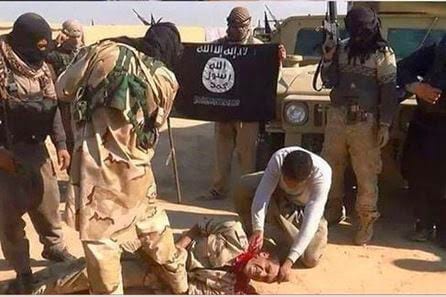
FOR THE RECORD: ISIS terrorist (of the real kind) beheading a prisoner. These are the kind of murderous lunatics and mercenaries that Washington and its accomplices in Europe and the kleptocrats in the Gulf support while pretending to fight them. Useful idiots serving the empire as proxy armies, unfortunately, in a broken down world, they abound.
Furthermore, it is particularly ironic (and distasteful) that Barth should produce this defamatory hit piece about courageous antifascist volunteer fighters in Novorossiya (Donbass), risking their lives to protect ethnic Russian civilians from savage attacks by fascists and neo-Nazis. It is dangerous and unpaid, but highly moral and noble work. Russell Bonner Bentley is singled out by Barth. Bentley is in his 50s and has sacrificed a great deal in order to volunteer as an anti-fascist fighter in Donbass. Why do I say, “particularly ironic”? Because it turns out (as earlier images illustrate) that Barth likes to dress up and play French Resistance fighter — and let’s see… Oh yes, now I remember — the French Resistance were fighting against fascists and Nazis. So it turns out that Bentley is a real anti-fascist fighter, Barth plays anti-fascist fighter, and Barth defames the real anti-fascist fighter. And the real fight is dangerous indeed. “Owl” was only a couple years older than Barth when he was killed in action recently, but obviously the moral antithesis of Mr. Barth (https://www.greanvillepost.com/2015/11/28/texacs-chronicles-donbass-front-no-9/).

Fedorov Ruslan Petrovich, “Eagle Owl”. Donbass fighter and exemplary patriot. What kind of deformed moral compass can call such men and the foreign volunteers fighting alongside them “terrorists”?
Prior to playing French Resistance fighter against the “Bosch” [Germans; (14)] at the “Tank Farm” (15) in 2013, Barth was playing war games in 2011 at the “Tank Farm” as documented at “Red Alliance, Eastern-Bloc Airsoft, Militeria and Reenactment” (16).
But who is M. Jon Morgan Barth anyway? Perhaps Sir Walter Scott’s line from his epic poem Marmion applies: “Oh, what a tangled web we weave / When first we practise to deceive!” How can his essay for the St. Andrews Foreign Affairs Society be reconciled with his posts in the Facebook groups “North American Support for Donetsk and Luhansk” and “Communist Discussion” (in 2014) which indicate sympathy for Donbass, even suggesting “…help(ing) to channel material aid to Donetsk…”? (See images below).
Was Barth just acting as a mole in these groups? Did he write this essay in 2015 to please new professors, trying to match the ideological bent of a professor or department and not really believing what he wrote? Or did he have a profound ideological epiphany shortly after beginning studies at St Andrews, and this essay accurately represents his ideology? Or was the epiphany not ideological but practical and realistic — a surrender to the reality of which side the bread is buttered on in academic institutions such as St Andrews, suppressing his previous idealism and ideological path as self destructive and impractical in terms of academic and career advancement, an inner split that might manifest itself in various ways depending on the level of suppression?
(I suspect this is the psychological mechanism behind the “balance” that many in academia and the mainstream media advocate and manifest in their analyses and reporting, a function of the cognitive dissonance that results from these inner and external forces. Perhaps we will see additional exercises of “balance” in future essays from Barth… But, to borrow from “The Treasure of the Sierra Madre”, we don’t need no stinkin’ balance. Bias is desirable and necessary if it is supported by good evidence. We need to go wherever good evidence leads. We need evidence, not “a curse on both your houses” balance in the service of career advancement.)
CLICK IMAGES FOR BEST RESOLUTION

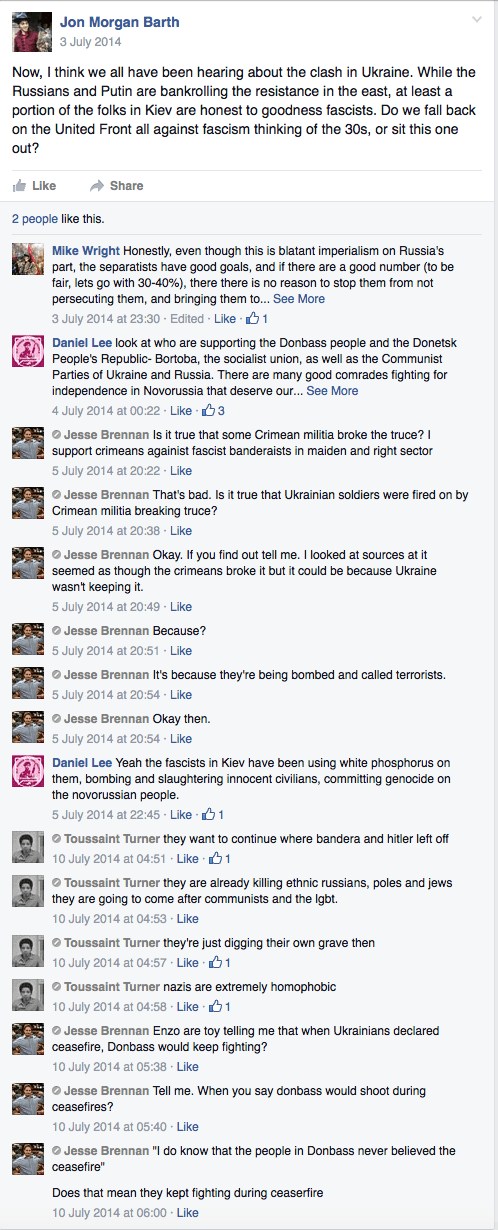
ABOVE: Wherein M. Barth appears keen on helping the Donbass resistance! Allons-y, brave maquisard! (Click for best resolution)
No matter what the explanation, Mr. Barth owes the international volunteers resisting fascist aggression in Donbass, as well as the victims of that fascist aggression, an unequivocal apology. His essay defames and disrespects both the anti-fascist fighters and the victims of the fascist aggression by the Kiev junta, supported/directed by the U.S. and E.U.
Considering his obvious gifts, what happened to Barth? A year or two before beginning studies at St Andrews, here is what he thought about Cuba:
According to Moon, Cuba is safe and comfortable, with a low crime rate. Jon Morgan Barth ’15, who also traveled with Moon to Russia in 2012, said the Cuba experience was “incredibly powerful.” The two saw Lenin’s tomb together, then two years later, the Plaza de la Revolución in Havana.

Happy traveller in Cuba. Screengrab from posted video of the school trip to the island. Barth is second from right. Hotchkiss has a reputation for intellectual integrity.
“It was a joy to see a place I had read so much about,” says Jon Morgan. “What astounded me most was the fact that the whole country seemed to be on track. Too often we, as Americans, think of Cuba as a Caribbean backwater, ruled by an outdated and flawed system. The Cuba I saw was instead one where the people honestly embraced a system that has benefitted them as individuals, and as a nation. There was genuine affection for the Castro brothers and the other heroes of their Revolution who helped turn an exploited pawn in the international game into a prosperous nation with a thriving culture, a system that provides for those who work, and freedom from exploitation.”
The acquisition of imperialist/fascist ideology in Western academic institutions is analogous to the process of malignant transformation, progressing through dysplasic, in situ and invasive phases, and then finally to a lethal metastatic stage (graduation?). Or perhaps there is some virulent moral/intellectual hemorrhagic fever virus infecting academic institutions in the West, a kind of moral/intellectual Ebola. Whatever it is, neoplastic or infectious, I think the student essays cited above are a relatively early stage in the disease process, although it is certain that these students come to university primed (burdened) with the indoctrination of the Media element of the Military-Industrial-Media-Academia complex.
“Bringing Up Baby” is a comic masterpiece (17), but the indoctrination and acculturation of students in Western educational institutions to the dominant culture of imperialism (with its conjoined twin of fascism, driven by end-stage capitalism) is no laughing matter. The features of the case described are consistent with an early step in the evolution of that acculturation in a prestigious university.
POSTSCRIPT
The disconnect between Jon Morgan Barth’s essay in Foreign Affairs Review and his previous expressions of sympathy for Donbass is further evidenced by the following messenger conversation in June 2015 between Mr. Barth and Russell Bentley. The real nature of Barth’s ideology regarding Western imperialism/fascism and the reasons and motivations for the obvious disconnect between his essay and his previous various expressions of sympathy and support for Donbass are uncertain at this point in time. Perhaps Mr. Barth did travel to Donbass as “…an independent photojournalist… trying to capture the stories of the international volunteers and citizens of Donetsk… (to) tell the REAL story of what is happening to the people of Donbas…” If he did travel to Donbass, he did not meet with Russell Bentley (and thus he wrote his essay without interviewing Russell Bentley either electronically or in person). If he did travel to Donbass, The Greanville Post invites him to submit a report of his trip for consideration for publication at The Greanville Post.
Dateline: Jun 9th, 9:28am (2015); situ: Facebook
 (https://www.facebook.com/jon.m.barth )
(https://www.facebook.com/jon.m.barth )
Hello Mr. Bentley, Sorry for taking down your post! While the sentiment is appreciated, keeping my support for the donbas on the down low is pretty important. I’m sure you know ho well the government treated the Americans who came back from Spanish Civil War, and in these day and age, they can get paint you as anti-American for being anti-fascist. I’m an independent photojournalist who will be in Donbas later this summer, trying to capture the stories of the international volunteers and citizens of Donetsk. While I am still working out logistics, I would love to get to meet you. I’ll be in Donetsk as a guest of the Interbrigada group, who are a branch of the Other Russia party. Good communists, and anti-fascists! My major concern at this point is getting to Donetsk. I’ll be coming from Ukraine, and crossing into Donetsk, rather than flying to Russia and going from there. While the Ukrops instinctively love Americans, I’m worried about getting through checkpoints manned by NAF troops. Do you know anyone I could contact to help with that? Stay safe, and best of luck, Jonathan
 (Russell Bentley)
(Russell Bentley)
No. If you want to cone to Donetsk, you would be foolish not to come via Rostov. To come here and have not made arrangements with Ukrop gov to be a spy, THEY will give you trouble. If you are planning to come here as an American, that’s already one strike against you. Your named after a Confederate general who was also a Freemason. I know history, and mos Russians and Novorussians know history better than me. Or you. If you come through the Ukrop lines, you will find it very hard to earn their trust. Or mine. Which interbrigada group? There are several. I will tell you now, not all the guys fighting the Kiev fascists are good guys, It is Big Boy Rules here, and you have to be creful who you trust.
Jun 9th, 2:37pm (2015)
 (https://www.facebook.com/jon.m.barth)
(https://www.facebook.com/jon.m.barth)
I’ll be registering as a journalist with the Kiev authorities, and have spoken with other American journalists who have done the same. They were all solid guys who were sympathetic to Novorossiya, but still got through. My contact in Interbrigada is guy named Valeriy Kolotsei, who painted himself as a moderate member of the Other Russia group, which was an evolution of the National Bolsheviks following Alexander Dugin leaving and the party losing its radical right branch. The issue with going through Rostov is that I’d need a visa to get to Russia in the first place, then papers allowing travel. The visa process is really daunting, from my understanding, and not cheap.
 (Russell Bentley)
(Russell Bentley)
You will not be trusted by anyone here, including me, if you come through Kiev. PERIOD. You are obviously from a rich family, so the cost is a bullshit excuse. Visa takes about a month, and 3 or 4 hundred bucks. Americans who come from Kiev side are not liked or trusted by anyone here, including me. Like I tell volunteers, getting here is the easy part. It is serious business here. If you are on the up and up, come through Rostov. If you are thinking about being a junior James Bond, DO NOT COME. We do not play games here. I hope you understand and make the right choice. удачи.
Jul 14th, 12:06am (2015)
 (https://www.facebook.com/jon.m.barth)
(https://www.facebook.com/jon.m.barth)
Hello again. After a lot of soul searching, I have decided to come to Donetsk, to serve as a photographer and journalist, and most importantly, tell the REAL story of what is happening to the people of Donbas. I have plane tickets to Rostov and will be getting my visa back in two days. My flights in Rostov on the 22nd of July and fly out on the 5th of August.
APPENDIX
What is this tribe we call “tuft-hunters”?
“toffee-nosed”
“If it’s a lady and gentleman, then we cries, ‘A toff and a doll!’
 [dropcap]I[/dropcap]t is widely agreed amongst etymologists that ‘toff’ was a corruption of ‘tuft’, which has a clear aristocratic pedigree, being the ornamental tassel on an academic cap. Specifically, a tuft was the gold tassel originally worn on academic caps at Oxford University by the sons of those peers who had a vote in the House of Lords. They were worn on the celebratory ‘Gaudy Days’, that is, the university’s twice-yearly feast days (which sound a good deal more fun than ‘Dress-down Fridays’). The wearers of the prestigious tufts became known as tufts themselves, even having their own sycophantic crowd of wannabees, known as the ‘tufthunters’.”
[dropcap]I[/dropcap]t is widely agreed amongst etymologists that ‘toff’ was a corruption of ‘tuft’, which has a clear aristocratic pedigree, being the ornamental tassel on an academic cap. Specifically, a tuft was the gold tassel originally worn on academic caps at Oxford University by the sons of those peers who had a vote in the House of Lords. They were worn on the celebratory ‘Gaudy Days’, that is, the university’s twice-yearly feast days (which sound a good deal more fun than ‘Dress-down Fridays’). The wearers of the prestigious tufts became known as tufts themselves, even having their own sycophantic crowd of wannabees, known as the ‘tufthunters’.”
[“The meaning and origin of the expression: Toffee-nosed: See the full explanation here.]
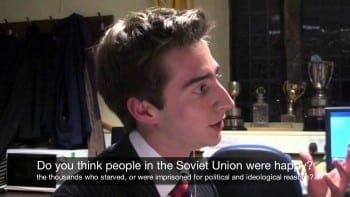
Additional example of a toffee-nosed imperialist-in-training elsewhere in Perfidious Albion: Durham University (https://www.dur.ac.uk/about/)
And here, Harpal Brar (Indian-born communist politician, writer and businessman based in Britain, who is the Chairman of the Communist Party of Great Britain) deconstructs the anti-communist / anti-Soviet propaganda, including intentional famine
BELOW: This lecture by frequent correspondent Caleb Maupin also does an excellent job of combatting long-implanted lies about communism as a viable alternative to a bankrupt capitalism.
REFERENCES:
ABOUT THE AUTHOR



//
= War Diary by Russell “Texac” Bentley =
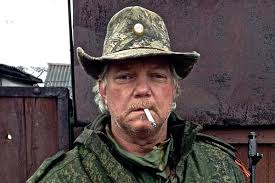
Christmas was celebrated by Orthodox Christians last week, on January 7, 2016 in the Gregorian calendar — December 25, 2015 in the Julian calendar.
Last year, in December 2013/January 2014, Texac was fighting the Kiev fascists in Yasynuvata (outskirts of Donetsk) and Troishka (Donetsk Airport), and it was hot, despite the cold weather.
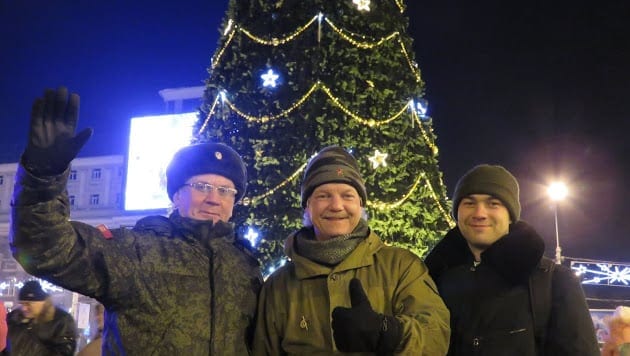
In the Christmas/New Year season this year (December 2014/January 2015), although the fascists are still killing Novorossiyan civilians in the outskirts of Donetsk, the intensity of the attacks has (perhaps only temporarily) decreased, allowing for more normal Christmas celebrations, at least in central Donetsk, as readers can see in the three videos below. (The Kiev fascists are still massed on the front in the outskirts of Donetsk, and they could resume a full-scale attack at any time.)

 RUSSEL BONNER BENTLEY
RUSSEL BONNER BENTLEY, Senior Contributing Editor, Novorossiya Correspondent, Donbass Chronicles Most of our editors and contributors are gifted in many areas, but few merit the label of “polymath” as richly as our Novorossiya correspondent, Russell Bentley, “Texac”. He has been called poet, musician, soldier, political activist, outlaw, smuggler, convict, fugitive, philosopher, lover, teacher and friend—and, indeed, he is all those things, but his course is always guided by an unswerving commitment to the construction of a better world in which peace, genuine freedom, and social justice reign supreme. A native of Texas, Russell joined—at the tender age of 54— the Novorossiyan Armed Forces (NAF) to fight what he sees as the attack on the Donbass people by an illegitimate fascist entity: the Kiev regime installed and supported by the US after a thinly-veiled coup. His example evokes the deeds of the Lincoln Battalion, the American volunteers who fought in the Spanish Civil War. As his writing gifts abundantly prove, he also channels John Reed and Hemingway in a rare, seamless, package.
Note to Commenters
Due to severe hacking attacks in the recent past that brought our site down for up to 11 days with considerable loss of circulation, we exercise extreme caution in the comments we publish, as the comment box has been one of the main arteries to inject malicious code. Because of that comments may not appear immediately, but rest assured that if you are a legitimate commenter your opinion will be published within 24 hours. If your comment fails to appear, and you wish to reach us directly, send us a mail at: editor@greanvillepost.com
We apologize for this inconvenience.
 Nauseated by the
Nauseated by the
vile corporate media?
Had enough of their lies, escapism,
omissions and relentless manipulation?
GET EVEN.
Send a donation to
The Greanville Post–or
SHARE OUR ARTICLES WIDELY!
But be sure to support YOUR media.
If you don’t, who will?
ALL CAPTIONS AND PULL-QUOTES BY THE EDITORS, NOT THE AUTHORS.

INTRODUCTION BY DANIEL WIRT

The rise of ISIS and the presence of al-Qaida, this time both used by the US and its western allies to topple Assad, shows that the global war on terror is a sham.
 The Orwellian disinformation and lies about the situation in Syria and the Middle East and its causation have been chronically disseminated by the presstitutes in the mainstream media and the pro-imperialist “left” (referred to by some wags as the “Left Boots of NATO”) in alternative media.
The Orwellian disinformation and lies about the situation in Syria and the Middle East and its causation have been chronically disseminated by the presstitutes in the mainstream media and the pro-imperialist “left” (referred to by some wags as the “Left Boots of NATO”) in alternative media.
Thankfully, there are several exemplary exceptions in the alternative media —analysts, journalists and researchers doing careful, intellectually honest, evidence-based work. Dr. Tim Anderson, a Senior Lecturer in Political Economy at the University of Sydney is an epitome in this regard, clearly one of the world’s experts on the recent history of Syria.
Dr. Anderson is compiling many of his excellent, heavily-researched but highly readable articles on Syria (http://www.globalresearch.ca/author/tim-anderson) into an upcoming book, “The Dirty War on Syria.” These articles (chapters) are vitally important for anti-imperialists, and thus The Greanville Post will republish all of them serially, chapter-by-chapter. We urge The Greanville Post readers to read them and use them to counter the Orwellian disinformation campaign against Syria.
Please click below to review the chapters being planned for The Dirty War on Syria. This is essential for your proper comprehension of this topic.
The Dirty War on Syria—Examine the Contents Outline Here
Chapter 1: the Introductory Chapter of Dr. Anderson’s upcoming book, “The Dirty War on Syria” is republished here: https://www.greanvillepost.com/2016/01/10/dr-tim-anderson-on-syria-countering-the-pressitution-of-the-mainstream-media-and-the-pro-imperialist-left-media/
See Below for Chapter 2: ‘Syria and Washington’s ‘New Middle East’’ puts Syria in context of the US plans for a ‘New Middle East’, the latest chapter in a longer history of US attempts to dominate the region. (http://www.globalresearch.ca/syria-and-washingtons-new-middle-east/5491908).
In the near future, The Greanville Post will republish additional chapters as follows:
Chapter 3, ‘Barrel Bombs, Partisan Sources and War Propaganda’ addresses the problem of reporting and reading the Syrian crisis. Media channels have shown a hyper-reliance on partisan sources, committed to the war and denigrating the Syrian Army. This is the key barrier to understanding the controversies around chemical weapons, civilian massacres and the levels of support for or opposition to President Assad.
Chapter 4, ‘Daraa 2011: Another Islamist Insurrection’ reconstructs, from a range of sources, the Saudi-backed Islamist insurrection in Daraa in March 2011. Those armed attacks were quite distinct from the political reform rallies, which the Islamists soon drove off the streets.
Chapter 5, ‘Bashar al Assad and Political Reform’ explains the political reform movement from the time Bashar assumed the presidency in the year 2000 to the beginning of the crisis in 2011. From this we can see that most opposition groups were committed to reform within a Syrian context, with virtually all opposing attacks on the Syrian state. The chapter then reviews the role of Bashar as a reformer, and the evidence on his popularity.
Chapter 6, ‘The Empire’s Jihadis’ looks at the collaboration between Salafist political Islam and the imperial powers in the Middle East. Distinct from the anti-imperial Islamic currents in Iran and south Lebanon, Salafist political Islam has become a sectarian force competing with Arab nationalism across Egypt, Palestine and Syria, and drawing on longstanding collaborative relations with the big powers. This history provides important background to the character of Syria’s Islamist ‘revolution’, and its various slogans.
Chapter 7, ‘Embedded Media, Embedded Watchdogs’ identifies the propaganda techniques of media channels and the network of ‘human rights’ bodies (Human Rights Watch, Avaaz, etc) which function as megaphones and ‘moderators’ for the Washington agenda. Many have become fierce advocates for ‘humanitarian war’. A number of newer western NGOs (e.g. The Syria Campaign, The White Helmets) have been created by Wall Street agencies specifically for the dirty war on Syria. A number of their fabrications are documented here.
Chapter 8, ‘The Houla Massacre Revisited’ considers in detail the evidence from the first major massacre designed (following success of the technique over Libya) to influence UN Security Council consideration of military intervention. While the first UN inquiry group, actually in Syria, found contradictory evidence on this massacre, a second UN group outside Syria and co-chaired by a US diplomat, tried to blame the Syrian Government. Yet more than a dozen witnesses blamed Farouq FSA Islamists, who killed pro-government villagers and took over the area, holding it for some months. Several other ‘false flag’ massacres are noted.
Chapter 9, ‘Chemical Fabrications: the East Ghouta Incident’ details the second major ‘false flag’ incident of international significance. This incident in August 2013, which nearly sparked a major escalation involving US missile attacks on Syria, was used to accuse the Syrian Government of killing hundreds of civilians, including children, with chemical weapons. Within a fairly short time multiple sources of independent evidence (including North American evidence) disproved these accusations. Nevertheless, Syria’s opponents have repeated the false accusations, to this day, as though they were fact.
Chapter 10, ‘A Responsibility to Protect and the Double Game’ addresses a recent political doctrine, a subset of ‘humanitarian intervention’ popularised to add to the imperial toolkit. The application of this doctrine in Libya was disastrous for that little country. Fortunately the attempts to use it in Syria failed.
Chapter 11, ‘Health and Sanctions’ documents the NATO-backed Islamist attacks on Syria’s health system, linked to the impact of western economic sanctions. These twin currents have caused great damage to Syrian public health. Such attacks carry no plausible motive of seeking local popular support, so we must interpret them as part of an overall strategy to degrade the Syrian state, rendering it more vulnerable to outside intervention.
Chapter 12 ‘Washington, Terrorism and ISIS: the evidence’, documents the links between the big powers and the latest peak terrorist group they claim to be fighting. Only evidence can help develop informed opinion on this contentious matter, but the evidence is overwhelming. There is little ideological difference between the various Salafi-Islamist groups, and Washington and its allies have financed and armed every one of them.
Chapter 13, ‘Western Intervention and the Colonial Mind’ discusses the western cultural mindset that underlies persistent violations of the rights of other peoples.
Chapter 14 ‘Towards an Independent Middle East’, considers the end-game in the Syrian crisis, and its implications for the Middle East region. At tremendous cost the Syrian Arab Republic, its army and its people, have successfully resisted aggression from a variety of powerful enemies. Syria’s survival is due to its resilience and internal unity, bolstered by support from some strong allies. The introduction of Russian air power in late September 2015 was important. So too were the coordinated ground forces from Iran, Iraq and Lebanon, in support of an independent Syria.

The following text is Chapter 2 of Professor Tim Anderson’s forthcoming book entitled The Dirty War on Syria

Obama paying obeisance to the Saudis…Since the 1950s, the Saudi monarchy has remained Washington’s key partner in developing organised terrorism as a tool to destabilise and dominate the Middle East. (Click image for best resolution)
The following text is chapter two of professor Tim Anderson’s forthcoming book entitled “The Dirty War on Syria”

Prof. Tim Anderson
After the invasions of Afghanistan and Iraq and the destruction of Libya, Syria was to be the next state overthrown. Washington and its regional allies had planned this for some time.
After ‘regime change’ in Damascus, Syria’s ally Hezbollah, leader of the Lebanese Resistance to Israel, would be isolated. The Islamic Republic of Iran would remain the only Middle East country without US military bases. After Iran, Washington would control the entire region, excluding possible competitors such as Russia and China. Palestine would be lost.
This was all part of Washington’s plan for a ‘New Middle East’; but it was not to be. Determined and coordinated resistance can never be discounted. Syria’s national army has resisted wave after wave of fanatical Islamist attacks, backed by NATO and the Gulf monarchies, and Russian and Iranian support remained solid. Importantly, Syria has built new forms of cooperation with a weak but emerging Iraq. Washington had worked for decades to divide Iran and Iraq, so the strengthening ties between Iran, Iraq, Syria, Lebanon and Palestine represent a regional challenge to the new ‘Great Game’ of our times. The Middle East is not just a big power playground.
The US and its close regional collaborators (Saudi Arabia, Israel, Turkey, Qatar and Jordan), we now know, have been behind every anti-Syrian extremist group since the beginning of the recent conflict. They have used the worst of reactionary and sectarian forces to pursue their ends. The Axis of Resistance, on the other hand, should not be misunderstood as a sectarian phenomenon. This group – the Islamic Republic of Iran, secular Syria, the Lebanese Resistance led by Hezbollah and the Palestinians – is deeply anti-imperial. Syria, the only remaining ‘secular’ state in the region has long allied itself with the Islamic Republic of Iran, including against Saddam Hussein’s secular Iraq. Saddam in turn was used by Washington to degrade Iran, after that country’s 1979 revolution. On the other hand, Iran never backed the sectarian Muslim Brotherhood in any of its insurrections against secular Syria. Iran does support the Shia Muslims of Hezbollah, but it is most demonised for arming Palestine, which has hardly any Shia. This plurality disproves any claims that the Axis of Resistance is sectarian. Promotion of sectarianism in the Middle East mostly comes from Washington’s key allies, Saudi Arabia, the other gulf monarchies, and the ethnic cleansers of Israel. They share the US aim of keeping the region weak and divided.

The UK’s PM, David Cameron doing his duty, also, in Ryadh. The alliance with the criminal kleptocrats in the Gulf is seen as essential by the Anglo-Zionists.
[dropcap]H[/dropcap]ow did Syria come to be targeted? We can chart the hostility back to Syria’s central role in the Arab-Israeli wars, especially those of 1967 and 1973, a common regional struggle against the expansionist Zionist state. After that, Syria’s support for 1979 Iranian Revolution put it offside with Washington. As far back as 1980, under the Carter administration, Washington was searching for a ‘change of regime’ in Damascus. A cable from the National Security Council to Secretary of State Zbigniew Brzezinski urged a coordinated study, including with their European and Arab monarchy partners, of ‘identifying possible alternative regimes’ to the Government led by Hafez al Assad. They were considering how to ‘reduce the problems of ill-considered reaction [by Syria’s ally, the Soviet Union] to a change of regime in Damascus’. The memorandum also recognised that any withdrawal of Syrian troops from Lebanon (Syria had entered Lebanon to stop the civil war, in 1975; it would stay until 2005) would run a ‘high’ risk of renewed civil war in that country and create ‘high incentives for Israeli military engagement in southern Lebanon’ (NSC 1980).
It was thus no coincidence that the Muslim Brotherhood, – always the most organised Syrian opposition group, and whose history of collaboration with outside powers dated back to the 1940s – began a series of bloody sectarian attacks from this point onwards, until their last insurrection was crushed in Hama in 1982. That insurrection had been backed by US allies Saudi Arabia, Saddam Hussein and Jordan (Seale 1988: 336-337). US intelligence at the time observed that ‘the Syrians are pragmatists who do not want a Muslim Brotherhood government’ (DIA 1982: vii). However US analysts, soon after, used the repression of the Muslim Brotherhood at Hama to demonstrate ‘the true establishment of Syria as a totalitarian state’ (Wikas 2007: vii). This was a useful fiction.
[dropcap]T[/dropcap]he next strategic shift against Syria came after the September 2001 attacks on the World Trade Centre New York, and the decision of Bush the Second to declare a ‘war on terror’. Although various pretexts were made for the interventions which followed, an overall plan for the Middle East was very rapidly set in train. Former senior US General Wesley Clark said in his memoirs that, two weeks after the September 2001 attacks, he was told by a ‘senior general’ at the Pentagon that the attack on Iraq (which came 18 months later) was already decided. Six weeks later he says that same general told him, ‘It’s worse than that’, before indicating a memo ‘from the Office of the Secretary of Defence … [saying] we’re going to take out seven countries in five years’.
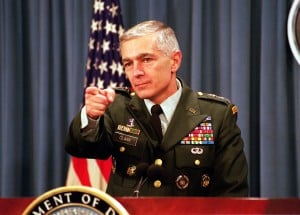 That list began with Iraq and Syria and ended with Iran (Clark 2007). Iraq’s ruler Saddam Hussein had been an enemy of Syria, through his opportunistic backing of the Syria Muslim Brotherhood and for his collaboration with the US in the long and bloody war against Iran. However the Syrian Government, led by Hafez al Assad, had supported the expulsion of Iraq from Kuwait in what has been called the First Gulf War (1990-1991). That war, whatever one thought of Kuwait’s monarchy, was a clear breach of the UN doctrine of collective security and, on that basis, attracted a UN Security Council mandate to intervene. However both Syria and Iran opposed the later invasion of Iraq (2003), even though it would depose their mutual enemy Saddam. The invasion of Iraq was clearly illegal and a war of aggression.
That list began with Iraq and Syria and ended with Iran (Clark 2007). Iraq’s ruler Saddam Hussein had been an enemy of Syria, through his opportunistic backing of the Syria Muslim Brotherhood and for his collaboration with the US in the long and bloody war against Iran. However the Syrian Government, led by Hafez al Assad, had supported the expulsion of Iraq from Kuwait in what has been called the First Gulf War (1990-1991). That war, whatever one thought of Kuwait’s monarchy, was a clear breach of the UN doctrine of collective security and, on that basis, attracted a UN Security Council mandate to intervene. However both Syria and Iran opposed the later invasion of Iraq (2003), even though it would depose their mutual enemy Saddam. The invasion of Iraq was clearly illegal and a war of aggression.
It was the unintended consequences of the invasion and occupation of Iraq that led to a shift in US policy, a move which was called a ‘redirection’ (Hersh 2007). Once Saddam Hussein’s Ba’athist administration had been deposed, a newly installed government in Damascus began a shift towards friendlier relations with Iran. It was not just that the majority of Iraq were Shia Muslims like, but not to as great an extent as, in Iran. Iraqis had developed a more pluralist culture, and did not want a religious state. However with Iran’s enemy Saddam out of the way, matters of genuine common concern could be discussed in a more normal climate of neighbourly relations. Yet the idea of good neighbourly relations between Iraq and Iran seriously worried Washington. They had not fuelled the Iraq-Iran war, nor invaded Iraq, to help bring about that outcome.
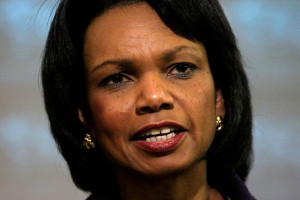 As early as 2005 US Secretary of State Condoleezza Rice began to speak of spreading ‘creative chaos’ in the region, to advance President Bush’s plan for a New Middle East (Karon 2006). Drawing on the traditions of the great powers, Washington set up a new ‘divide and rule’ strategy. White House insiders called Bush’s new policy ‘the redirection’, involving a more open confrontation with Iran and attempting to drive a ‘sectarian divide between Shiite and Sunni Muslims …[Yet] to the distress of the White House, Iran has forged a close relationship with the Shiite dominated government of Prime Minster Nuri al-Malaki’ (Hersh 2007). Rice told the US Senate Foreign Relations Committee she saw ‘a new strategic alignment’ in the region, with ‘Sunni states’ [the Gulf monarchies] as the centres of moderation and Iran, Syria and Hezbollah ‘on the other side of that divide’ (Hersh 2007).
As early as 2005 US Secretary of State Condoleezza Rice began to speak of spreading ‘creative chaos’ in the region, to advance President Bush’s plan for a New Middle East (Karon 2006). Drawing on the traditions of the great powers, Washington set up a new ‘divide and rule’ strategy. White House insiders called Bush’s new policy ‘the redirection’, involving a more open confrontation with Iran and attempting to drive a ‘sectarian divide between Shiite and Sunni Muslims …[Yet] to the distress of the White House, Iran has forged a close relationship with the Shiite dominated government of Prime Minster Nuri al-Malaki’ (Hersh 2007). Rice told the US Senate Foreign Relations Committee she saw ‘a new strategic alignment’ in the region, with ‘Sunni states’ [the Gulf monarchies] as the centres of moderation and Iran, Syria and Hezbollah ‘on the other side of that divide’ (Hersh 2007).
“The US and its close regional collaborators (Saudi Arabia, Israel, Turkey, Qatar and Jordan), we now know, have been behind every anti-Syrian extremist group since the beginning of the recent conflict…”
The idea was to play on community divisions to create conflict, particularly in Iraq. US Central Command’s ‘Red Team’ exercises began in 2006, with military planning focused on divisions which they characterised as Arabs versus Persians (Iranians), later asking themselves whether ‘Sunni-Shia [might be] a more appropriate framework?’ Their key assumption was that ‘there does not appear to be a scenario where Arabs and Persians will join forces against the US/West’ (Narwani 2011). The cutting edge of the operation would be the creation of al Qaeda in Iraq (IQI), funded by the Saudis and carrying out sectarian attacks on mosques and other community centres, to inflame community tensions. Senior western officials have acknowledged privately that the various billionaires of Saudi Arabia (along with the other Gulf monarchies) constitute ‘the most significant source of funding to Sunni [sic] terrorist groups worldwide’ (Jones 2014).
Although al Qaeda in Iraq, a.k.a. the Islamic State of Iraq (ISI), at first claimed to be overwhelmingly Iraqi (Felter and Fishman 2008: 3), Saudi finance and recruiting significantly internationalised it. Records captured by the US military in October 2007 at Sinjar, on the Iraqi-Syrian border underline this. Those records referred to a group of about 500, half of whom were Saudi, then North African (Libyan, Algerian, Tunisian, Moroccan) and then others. Other estimates between 2005 and 2007 suggested greater or lesser degrees of various nationalities, with the largest group (40-55%) being Saudis (Felter and Fishman 2008: 8, 30-31).
A notorious example of the strategy to provoke sectarian conflict was the February 2006 bombing of the al Askari mosque in Samarra, in southern Iraq, which killed over a thousand people. Despite calls for restraint by Shia leaders in Iraq, Iran and Lebanon, there were sectarian reprisals. When arrests were made this act was said to have been carried out by an al Qaeda seven-man cell, led by an Iraqi with a Tunisian, four Saudis and two other Iraqis (Ridolfo 2007). Although al Qaeda was implicated from the start, US media and analyst focus shifted to what they called ‘Iraq’s sectarian divide’ (Worth 2006). Yet while Saddam Hussein had backed the Muslim Brotherhood in Syria, he did not allow al Qaeda groups in Iraq. That was a more recent development, and not just an ‘organic’ reaction to the US occupation. Western sources sometimes acknowledge that much of the finance and the fighters for Al Qaeda have come from Saudi Arabia (Bruno 2007). However they also cloud the issue with claims that Iran and Hezbollah have, from time to time, supported al Qaeda (Kaplan 2006). Such claims are quite false.
Israel was deeply embedded with the New Middle East plan and in July-August 2006, after getting the ‘green light’ from Washington (Hersh 2006), seized on a pretext to invade southern Lebanon. The broader aim was to degrade and disarm Hezbollah. However after almost 1200 Lebanese and 165 Israelis had been killed, a UN ceasefire was brokered. Israel had failed in all its objectives. US Secretary of State Condoleezza Rice called this tragedy, at a time when 400 had died and half a million were displaced, simply the ‘birth pangs of a New Middle East’ (Karon 2006). That statement prompted Rami Khouri of Beirut’s Daily Star to write: ‘Washington is engaged almost exclusively with Arab governments [the Gulf monarchies] whose influence with Syria is virtually nonexistent, whose credibility with Arab public opinion is zero, whose own legitimacy at home is increasingly challenged, and whose pro-US policies tend to promote the growth of those [extremist] Islamist movements’ (Khouri 2006).
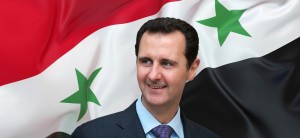 During the destabilisation of post-Saddam Iraq, Syria was on Washington’s ‘back-burner’, but hardly forgotten. From cables released by Wikileaks we know that the US Embassy in Syria was concerned that, despite the sanctions imposed in 2005 for Syria’s non-cooperation over Iraq, Syria had ended 2006 ‘in a much stronger position domestically and internationally than it did in 2006’. Washington had tried to accuse Damascus of harbouring Iraqi resistance fighters (Syria had taken in well over a million refugees from Iraq, after the US invasion in 2003) but the US Embassy privately acknowledged that ‘extremist elements increasingly use Syria as a base, while the SARG [Syrian Arab Republic Government] has taken some actions against groups stating links to Al-Qaeda’. Nevertheless the Embassy suggested the State Department look for opportunities to ‘disrupt [Syrian President Bashar al Assad’s] decision making, keep him off-balance and make him pay a premium for his mistakes’ (US Embassy Damascus 2006).
During the destabilisation of post-Saddam Iraq, Syria was on Washington’s ‘back-burner’, but hardly forgotten. From cables released by Wikileaks we know that the US Embassy in Syria was concerned that, despite the sanctions imposed in 2005 for Syria’s non-cooperation over Iraq, Syria had ended 2006 ‘in a much stronger position domestically and internationally than it did in 2006’. Washington had tried to accuse Damascus of harbouring Iraqi resistance fighters (Syria had taken in well over a million refugees from Iraq, after the US invasion in 2003) but the US Embassy privately acknowledged that ‘extremist elements increasingly use Syria as a base, while the SARG [Syrian Arab Republic Government] has taken some actions against groups stating links to Al-Qaeda’. Nevertheless the Embassy suggested the State Department look for opportunities to ‘disrupt [Syrian President Bashar al Assad’s] decision making, keep him off-balance and make him pay a premium for his mistakes’ (US Embassy Damascus 2006).
Meantime the groundwork was being laid for intervention. The US State Department had allocated $5 million for ‘Syrian governance and reform programs’ in early 2006 (Wikas 2007: viii). The Bush administration was funding media channels and NGOs. US cables confirm that the US State Department had funded the London-based Barada Television and a network of Syrian exiles called the ‘Movement for Justice and Development’ (Whitlock 2011).
This was a special program set up in parallel with similar work done more widely through the State Department funded National Endowment for Democracy. This funding came through intermediary groups in the US, in particular the Democracy Council, which in turn received grants from the Middle East Partnership Initiative. Cables from the US Embassy in Damascus from 2009 onwards say the Democracy Council received $6.3 million to run a Syria program called ‘Civil Society Strengthening Initiative’, which included ‘various broadcast concepts’ including Barada TV. A higher figure of about $12 million between 2005 and 2010 was later noted, with the US Embassy in Damascus telling the State Department that the Syrian Government ‘would undoubtedly view any U.S. funds going to illegal political groups as tantamount to supporting regime change’. They were concerned that Syrian intelligence (the notorious Mukhabarat) was hot on the trail of these programs (Whitlock 2011).
Although the Bush administration imposed a series of sanctions on Syria, between 2003 and 2008, supposedly linked to its role in Lebanon and Iraq, there were also high level diplomatic contacts with the Syrian Government. Often US policy seemed incoherent, but hostility was not far below the surface. The US demanded liberalisation of Syria’s economic policy, but blocked its attempt to join the World Trade Organization (Sadat and Jones 2009). William Rugh, former US Ambassador to the UAE, characterised US policy towards Syria as one of ‘isolation and monologue’, while ex-CIA analyst Martha Kessler says the entire policy had to be based on ‘the context of a belief among many in this [US] administration that this regime [the Syrian Government] has to go’ (Sadat and Jones 2009).
That ambition included military preparation, but not just conventional military preparation. The British were on board. Former French Foreign Minister Roland Dumas said, two years before the violence erupted in Syria: ‘I met with top British officials who confessed to me that they were preparing something on Syria … Britain was organising an invasion of rebels into Syria. They even asked me, although I was no longer Minister of Foreign Affairs, it I would like to participate.’ He says he refused (Lehman 2013). Just what detail there was to this 2009 plan is not clear.
Nevertheless the US had long experience in dirty, covert wars, fought through proxies, in Central America (e.g. El Salvador and Nicaragua), in Africa (e.g. Zaire and Angola) and in the Middle East (e.g. Afghanistan). After President Bush declared his ‘War On Terrorism’ in 2001, the US Army manual on ‘unconventional warfare’ (UW) was revised several times to take account of the range of activities the US needed to pursue its ambitious plans. The 2008 version of this manual quotes with approval the ancient Chinese scholar of war, Sun Tsu: ‘defeating the enemy without fighting is the acme of skill’ (US Army 2008: 1.1). That is, it is both efficient and effective to develop a range of means, short of direct military confrontation. The manual envisages ‘unconventional war’ which ‘must be conducted by, with or through surrogates’, citing the earlier examples of this in Nicaragua and Afghanistan. The manual emphasises, the ‘clearly stated purpose of UW [is] to support insurgencies, resistance movements and conventional military operations’ (US Army 2008: 1.1-1.2). That unconventional war is precisely what was in preparation for Syria, before the events of late 2010 and early 2011 in Egypt and Tunisia, which came to be known as the Arab Spring. The model would be an extension of al Qaeda (or the Islamic State) in Iraq, drawing on Syrian Muslim Brotherhood networks and the ever faithful, sectarian and vicious Saudis.
Had Syria been isolated, like Iraq and Libya, this plan might have been more straight-forward. But the NATO and Gulf Arab proxy armies would face an Axis of Resistance, with some powerful allies and with experience of sectarian provocations.
Notes:
Bruno, Greg (2007) ‘Profile: Al-Qaeda in Iraq’, Council on Foreign Relations report, Washington Post, 19 November, online: http://www.washingtonpost.com/wp-dyn/content/article/2007/11/19/AR2007111900721.html
Clark, Wesley (2007) A Time to Lead: for duty, honor and country, St. Martin’s Press, London
DIA (1982) ‘Syria: Muslim Brotherhood Pressure Intensifies’, Defence Intelligence Agency (USA), May, online: https://syria360.files.wordpress.com/2013/11/dia-syria-muslimbrotherhoodpressureintensifies-2.pdf
Felter, Josep and Brian Fishman (2008) ‘Al-Qa’idas’s Foreign Fighters in Iraq: a first look at the Sinjar records’, Combating Terrorism Center at West Point, New York, online: https://www.ctc.usma.edu/posts/al-qaidas-foreign-fighters-in-iraq-a-first-look-at-the-sinjar-records
Hersh, Seymour (2006) ‘Watching Lebanon’, The New Yorker, 21 August, online: http://www.newyorker.com/magazine/2006/08/21/watching-lebanon
Hersh, Seymour (2007) ‘The Redirection’, New Yorker, 5 March, online: http://www.newyorker.com/magazine/2007/03/05/the-redirection
Jones, Owen (2014) ‘To really combat terror, end support for Saudi Arabia’, The Guardian, 1 September, online: http://www.theguardian.com/commentisfree/2014/aug/31/combat-terror-end-support-saudi-arabia-dictatorships-fundamentalism
Kaplan, Eben (2006) ‘The Al-Qaeda-Hezbollah Relationship’, Council on Foreign Relations,
14 August, online: http://www.cfr.org/terrorist-organizations-and-networks/al-qaeda-hezbollah-relationship/p11275
Karon, Tony (2006) ‘Condi in Diplomatic Disneyland’, Time, 26 July, online: http://content.time.com/time/world/article/0,8599,1219325,00.html
Khouri, Rami (2006) ‘Birth pangs of a New Middle East’, Daily Star, July, online: http://www.dailystar.com.lb/GetArticleBody.aspx?id=113043
Lehmann, Christof (2013) ‘Dumas, ‘Top British officials confessed to Syria war plans two years before Arab Spring’, NSNBC, 1 June, online: http://nsnbc.me/2013/06/16/dumas-top-british-officials-confessed-to-syria-war-plans-two-years-before-arab-spring/
Narwani, Sharmine (2011) ‘Pentagon game to divide Iranians and Arabs’, Salon, 26 October, online: http://www.salon.com/2011/10/26/pentagon_game_to_divide_iranians_and_arabs/
NSC (1980) ‘Syria July 16, 1980’, National Security Council, 4203XX, Memorandum for Zbigniew Brzezinski, declassified document
Ridolfo, Kathleen (2007) ‘Iraq: Samarra Bombing Set Off Year Of Violence’, Radio Free Europe, Radio Liberty, 12 February, online: http://www.rferl.org/content/article/1074662.html
Sadat, Mi H and Daniel B Jones (2009) ‘U.S. Foreign Policy Towards Syria: balancing ideology and national interests’, Middle East Policy Council, Summer, Volume XVI, Number 2, online: http://www.mepc.org/journal/middle-east-policy-archives/us-foreign-policy-toward-syria-balancing-ideology-and-national-interests?print
Seale, Patrick (1988) Asad: the struggle for the Middle East, University of California Press, Berkeley CA
US Army (2008) ‘Army Special Operations Forces: Unconventional Warfare’, FM 3-05.130, United Stats Army John F. Kennedy Special Warfare Center and School, Fort Bragg NC
US Embassy Damascus (2006) ‘Influencing the SARG in the end of 2006’, Cable to US State Department, Wikileaks, 13 December, online: https://wikileaks.org/plusd/cables/06DAMASCUS5399_a.html
Whitlock, Craig (2011) ‘U.S. secretly backed Syrian opposition groups, cables released by Wikileaks show’, Washington Post, 17 April, online: https://www.washingtonpost.com/world/us-secretly-backed-syrian-opposition-groups-cables-released-by-wikileaks-show/2011/04/14/AF1p9hwD_story.html
Wikas, Seth (2007) ‘Battling the Lion of Damascus: Syria’s domestic opposition and the Asad regime’, Washington Institute for Near East Policy, Policy Focus #69, May, online: http://www.washingtoninstitute.org/policy-analysis/view/battling-the-lion-of-damascus-syrias-domestic-opposition-and-the-asad-regim
Worth, Robert F. (2006) ‘Blast Destroys Shrine in Iraq, Setting Off Sectarian Fury’, New York Times, 22 February, online: http://www.nytimes.com/2006/02/22/international/middleeast/22cnd-iraq.html?_r=0
ABOUT THE AUTHOR
Dr Tim Anderson is a Senior Lecturer in Political Economy at the University of Sydney. He researches and writes on development, rights and self-determination in Latin America, the Asia-Pacific and the Middle East. He has published many dozens of chapters and articles in a range of academic books and journals. His last book was Land and Livelihoods in Papua New Guinea (Australian Scholarly Publishing, Melbourne, 2015).
DANIEL WIRT serves as Associate Editor with the Greanville Post. See more about Daniel here.
The original source of this article is Global Research
EYE ON THE MEDIA
DANIEL WIRT
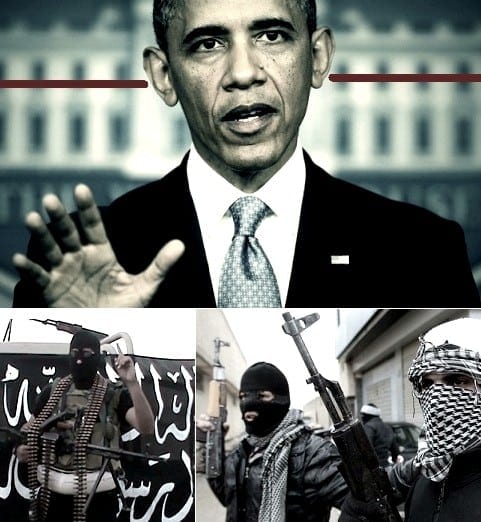
Stealthy, hypocritical mass murderers like Bush, Obama, Cameron and the rest operate behind a thick curtain of bald-faced lies, glaring omissions, and jingoist public relationese.
The Orwellian disinformation and lies about the situation in Syria and the Middle East and its causation have been chronically disseminated by the presstitutes of both the mainstream media and the pro-imperialist “left” (referred to by some wags as the “Left Boots of NATO”) alternative media.
Thankfully, there are several exemplary exceptions in the alternative media —analysts, journalists and researchers doing careful, intellectually honest, evidence-based work. Dr. Tim Anderson, a Senior Lecturer in Political Economy at the University of Sydney is an epitome in this regard, clearly one of the world’s experts on the recent history of Syria.
In October 2015, The Greanville Post republished one of Dr. Anderson’s important articles (originally published at the excellent Global Research):
Daraa 2011: Syria’s Islamist Insurrection in Disguise
(https://www.greanvillepost.com/2015/10/06/daraa-2011-syrias-islamist-insurrection-in-disguise/ originally published at http://www.globalresearch.ca/daraa-2011-syrias-islamist-insurrection-in-disguise/5460547)
In this article, Dr. Anderson lays out the evidence and facts to support the conclusion that from the very beginning, the protests were infiltrated by extremist Salafist Sunni Islamists and that the secular government of Bashar Assad was responding to the violence perpetrated by those sectarian Islamists.
In fact, Dr. Anderson has written multiple excellent, heavily-researched but highly readable articles on Syria, and we urge The Greanville Post readers to read them and use them to counter the Orwellian disinformation campaign against Syria (http://www.globalresearch.ca/author/tim-anderson).
(Note Dr. Anderson’s latest article there: Madaya: More Fabricated Photos Used in the Dirty War on Syria)

(Click for best resolution)
Dr. Anderson is compiling many of these articles into an upcoming book, “The Dirty War on Syria.” These articles (chapters) are vitally important for anti-imperialists, and thus The Greanville Post will republish all of them serially, chapter-by-chapter.
“The Dirty War on Syria”:
To follow are Chapters 2-14:
Chapter 2, ‘Syria and Washington’s ‘New Middle East’’ puts Syria in context of the US plans for a ‘New Middle East’, the latest chapter in a longer history of US attempts to dominate the region.
Chapter 3, ‘Barrel Bombs, Partisan Sources and War Propaganda’ addresses the problem of reporting and reading the Syrian crisis. Media channels have shown a hyper-reliance on partisan sources, committed to the war and denigrating the Syrian Army. This is the key barrier to understanding the controversies around chemical weapons, civilian massacres and the levels of support for or opposition to President Assad.
Chapter 4, ‘Daraa 2011: Another Islamist Insurrection’ reconstructs, from a range of sources, the Saudi-backed Islamist insurrection in Daraa in March 2011. Those armed attacks were quite distinct from the political reform rallies, which the Islamists soon drove off the streets.
Chapter 5, ‘Bashar al Assad and Political Reform’ explains the political reform movement from the time Bashar assumed the presidency in the year 2000 to the beginning of the crisis in 2011. From this we can see that most opposition groups were committed to reform within a Syrian context, with virtually all opposing attacks on the Syrian state. The chapter then reviews the role of Bashar as a reformer, and the evidence on his popularity.
Chapter 6, ‘The Empire’s Jihadis’ looks at the collaboration between Salafist political Islam and the imperial powers in the Middle East. Distinct from the anti-imperial Islamic currents in Iran and south Lebanon, Salafist political Islam has become a sectarian force competing with Arab nationalism across Egypt, Palestine and Syria, and drawing on long standing collaborative relations with the big powers. This history provides important background to the character of Syria’s Islamist ‘revolution’, and its various slogans.
Chapter 7, ‘Embedded Media, Embedded Watchdogs’ identifies the propaganda techniques of media channels and the network of ‘human rights’ bodies (Human Rights Watch, Avaaz, etc) which function as megaphones and ‘moderators’ for the Washington agenda. Many have become fierce advocates for ‘humanitarian war’. A number of newer western NGOs (e.g. The Syria Campaign, The White Helmets) have been created by Wall Street agencies specifically for the dirty war on Syria. A number of their fabrications are documented here.
Chapter 8, ‘The Houla Massacre Revisited’ considers in detail the evidence from the first major massacre designed (following success of the technique over Libya) to influence UN Security Council consideration of military intervention. While the first UN inquiry group, actually in Syria, found contradictory evidence on this massacre, a second UN group outside Syria and co-chaired by a US diplomat, tried to blame the Syrian Government. Yet more than a dozen witnesses blamed Farouq FSA Islamists, who killed pro-government villagers and took over the area, holding it for some months. Several other ‘false flag’ massacres are noted.
Chapter 9, ‘Chemical Fabrications: the East Ghouta Incident’ details the second major ‘false flag’ incident of international significance. This incident in August 2013, which nearly sparked a major escalation involving US missile attacks on Syria, was used to accuse the Syrian Government of killing hundreds of civilians, including children, with chemical weapons. Within a fairly short time multiple sources of independent evidence (including North American evidence) disproved these accusations. Nevertheless, Syria’s opponents have repeated the false accusations, to this day, as though they were fact.
Chapter 10, ‘A Responsibility to Protect and the Double Game’ addresses a recent political doctrine, a subset of ‘humanitarian intervention’ popularised to add to the imperial toolkit. The application of this doctrine in Libya was disastrous for that little country. Fortunately the attempts to use it in Syria failed.
Chapter 11, ‘Health and Sanctions’ documents the NATO-backed Islamist attacks on Syria’s health system, linked to the impact of western economic sanctions. These twin currents have caused great damage to Syrian public health. Such attacks carry no plausible motive of seeking local popular support, so we must interpret them as part of an overall strategy to degrade the Syrian state, rendering it more vulnerable to outside intervention.
Chapter 12 ‘Washington, Terrorism and ISIS: the evidence’, documents the links between the big powers and the latest peak terrorist group they claim to be fighting. Only evidence can help develop informed opinion on this contentious matter, but the evidence is overwhelming. There is little ideological difference between the various Salafi-Islamist groups, and Washington and its allies have financed and armed every one of them.
Chapter 13, ‘Western Intervention and the Colonial Mind’ discusses the western cultural mindset that underlies persistent violations of the rights of other peoples.
Chapter 14 ‘Towards an Independent Middle East’, considers the end-game in the Syrian crisis, and its implications for the Middle East region. At tremendous cost the Syrian Arab Republic, its army and its people, have successfully resisted aggression from a variety of powerful enemies. Syria’s survival is due to its resilience and internal unity, bolstered by support from some strong allies. The introduction of Russian air power in late September 2015 was important. So too were the coordinated ground forces from Iran, Iraq and Lebanon, in support of an independent Syria.
The following text is the introductory chapter of Professor Tim Anderson’s forthcoming book entitled
The Dirty War on Syria
Although every war makes ample use of lies and deception, the dirty war on Syria has relied on a level of mass disinformation not seen in living memory. The British-Australian journalist Philip Knightley pointed out that war propaganda typically involves ‘a depressingly predictable pattern’ of demonising the enemy leader, then demonising the enemy people through atrocity stories, real or imagined (Knightley 2001). Accordingly, a mild-mannered eye doctor called Bashar al Assad became the new evil in the world and, according to consistent western media reports, the Syrian Army did nothing but kill civilians for more than four years. To this day, many imagine the Syrian conflict is a ‘civil war’, a ‘popular revolt’ or some sort of internal sectarian conflict. These myths are, in many respects, a substantial achievement for the big powers which have driven a series of ‘regime change’ operations in the Middle East region, all on false pretexts, over the past 15 years.—Dr. Tim Anderson
This book is a careful academic work, but also a strong defence of the right of the Syrian people to determine their own society and political system. That position is consistent with international law and human rights principles, but may irritate western sensibilities, accustomed as we are to an assumed prerogative to intervene. At times I have to be blunt, to cut through the double-speak. In Syria the big powers have sought to hide their hand, using proxy armies while demonising the Syrian Government and Army, accusing them of constant atrocities; then pretending to rescue the Syrian people from their own government. Far fewer western people opposed the war on Syria than opposed the invasion of Iraq, because they were deceived about its true nature.
In 2011 I had only a basic understanding of Syria and its history. However I was deeply suspicious when reading of the violence that erupted in the southern border town of Daraa. I knew that such violence (sniping at police and civilians, the use of semi-automatic weapons) does not spring spontaneously from street demonstrations. And I was deeply suspicious of the big powers. All my life I had been told lies about the pretexts for war. I decided to research the Syrian conflict, reading hundreds of books and articles, watching many videos and speaking to as many Syrians as I could. I wrote dozens of articles and visited Syria twice, during the conflict. This book is a result of that research.
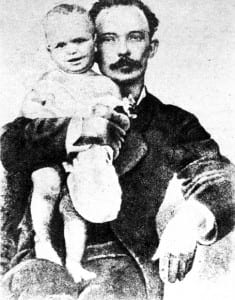
Cuban hero José Martí holding his young son. As an exile, Martí lived in Brooklyn and understood US politicians better than most Latin American leaders ever do. His warnings on US policies to come proved eerily prescient.
[dropcap]D[/dropcap]irty wars are not new. Cuban national hero Jose Martí predicted to a friend that Washington would try to intervene in Cuba’s independence struggle against the Spanish. ‘They want to provoke a war’, he wrote in 1889 ‘to have a pretext to intervene and, with the authority of being mediator and guarantor, to seize the country … There is no more cowardly thing in the annals of free people; nor such cold blooded evil’ (Martí 1975: 53). Nine years later, during the third independence war, an explosion in Havana Harbour destroyed the USS Maine, killing 258 US sailors and serving as a pretext for a US invasion.
The subsequent ‘Spanish-American’ war snatched victory from the Cubans and allowed the US to take control of the remaining Spanish colonial territories. Cuba had territory annexed and a deeply compromised constitution was imposed. No evidence ever proved the Spanish were responsible for the bombing of the Maine and many Cubans believe the North Americans bombed their own ship. The monument in Havana (see below), in memory of those sailors, still bears this inscription: ‘To the victims of the Maine who were sacrificed to imperialist voracity and the desire to gain control of the island of Cuba’ (Richter 1998).

Always good at capitalizing on the propaganda dividend from their false flags, America’s new-fangled imperialists, who included Teddy Roosevelt, wasted no time in erecting a sumptuous monument to the “martyrs of the Maine”, memorializing the 266 American soldiers who died when the battleship U.S.S. Maine exploded in Havana, Cuba on February 15, 1898. While the cause of the explosion was never officially established, publisher William Randolph Hearst joined with pro-war forces in promoting the disaster as an act of sabotage and triggering the Spanish-American War, which resulted in American acquisition from Spain of Cuba, Puerto Rico, Guam and the Philippines. Hearst, a media baron to rival the sordid Murdoch in our time, solicited donations for this monument over a period of years. The monument—a testimony to the usual lavish sanctimony enveloping all US military aggressions since that time— was dedicated in New York’s Central Park in 1913.
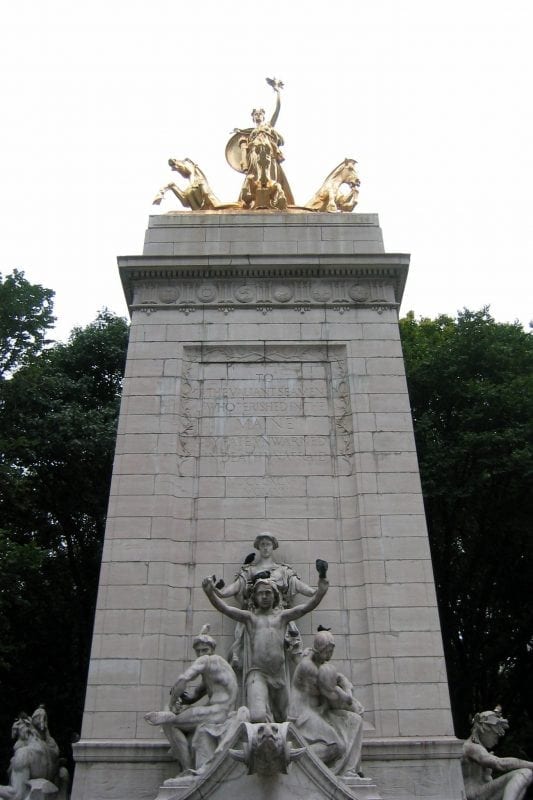 The US launched dozens of interventions in Latin America over the subsequent century. A notable dirty war was led by CIA-backed, ‘freedom fighter’ mercenaries based in Honduras, who attacked the Sandinista Government and the people of Nicaragua in the 1980s. That conflict, in its modus operandi, was not so different to the war on Syria. In Nicaragua more than 30,000 people were killed. The International Court of Justice found the US guilty of a range of terrorist-style attacks on the little Central American country, and found that the US owed Nicaragua compensation (ICJ 1986). Washington ignored these rulings.
The US launched dozens of interventions in Latin America over the subsequent century. A notable dirty war was led by CIA-backed, ‘freedom fighter’ mercenaries based in Honduras, who attacked the Sandinista Government and the people of Nicaragua in the 1980s. That conflict, in its modus operandi, was not so different to the war on Syria. In Nicaragua more than 30,000 people were killed. The International Court of Justice found the US guilty of a range of terrorist-style attacks on the little Central American country, and found that the US owed Nicaragua compensation (ICJ 1986). Washington ignored these rulings.
“After the demonisation of Syrian leader Bashar al Assad began, a virtual information blockade was constructed against anything which might undermine the wartime storyline. Very few sensible western perspectives on Syria emerged after 2011, as critical voices were effectively blacklisted…”
[dropcap]W[/dropcap]ith the ‘Arab Spring’ of 2011 the big powers took advantage of a political foment by seizing the initiative to impose an ‘Islamist winter’, attacking the few remaining independent states of the region. Very quickly we saw the destruction of Libya, a small country with the highest standard of living in Africa. NATO bombing and a Special Forces campaign helped the al Qaeda groups on the ground. The basis for NATO’s intervention was lies told about actual and impending massacres, supposedly carried out or planned by the government of President Muammar Gaddafi. These claims led rapidly to a UN Security Council resolution said to protect civilians through a ‘no fly zone’. We know now that trust was betrayed, and that the NATO powers abused the limited UN authorisation to overthrow the Libyan Government (McKinney 2012).
Alan Kuperman, drawing mainly on North American sources, demonstrates the following points. First, Gaddafi’s crackdown on the mostly Islamist insurrection in eastern Libya was ‘much less lethal’ than had been suggested. Indeed there was evidence that he had had ‘refrained from indiscriminate violence’. The Islamists were themselves armed from the beginning. From later US estimates, of the almost one thousand casualties in the first seven weeks, about three percent were women and children (Kuperman 2015). Second, when government forces were about to regain the east of the country, NATO intervened, claiming this was to avert an impending massacre. Ten thousand people died after the NATO intervention, compared to one thousand before. Gaddafi had pledged no reprisals in Benghazi and ‘no evidence or reason’ came out to support the claim that he planned mass killings (Kuperman 2015). The damage was done. NATO handed over the country to squabbling groups of Islamists and western aligned ‘liberals’. A relatively independent state was overthrown, but Libya was destroyed. Four years on there is no functioning government and violence persists; and that war of aggression against Libya went unpunished.
Subsequently, no evidence emerged to prove that Gaddafi intended, carried out or threatened wholesale massacres, as was widely suggested (Forte 2012). Genevieve Garrigos of Amnesty International (France) admitted there was ‘no evidence’ to back her group’s earlier claims that Gaddafi had used ‘black mercenaries’ to commit massacres (Forte 2012; Edwards 2013).

Once again, the imperialist media (the example above is from a British tabloid) proved their fealty to their overlords by acting with its usual bombastic chauvinism and high-handed disregard for truth. Barbarism is not barbarism when carried out by “our freedom fighters.”
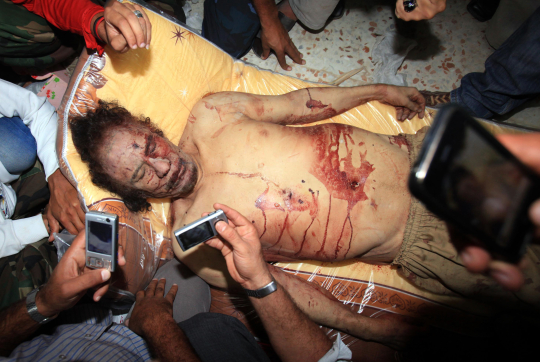
Two days before NATO bombed Libya another armed Islamist insurrection broke out in Daraa, Syria’s southernmost city. Yet because this insurrection was linked to the demonstrations of a political reform movement, its nature was disguised. Many did not see that those who were providing the guns – Qatar and Saudi Arabia – were also running fake news stories in their respective media channels, Al Jazeera and Al Arabiya. There were other reasons for the durable myths of this war. Many western audiences, liberals and leftists as well as the more conservative, seemed to like the idea of their own role as the saviours of a foreign people, speaking out strongly about a country of which they knew little, but joining what seemed to be a ‘good fight’ against this new ‘dictator’. With a mission and their proud self-image western audiences apparently forgot the lies of previous wars, and of their own colonial legacies.
I would go so far as to say that, in the Dirty War on Syria, western culture in general abandoned its better traditions: of reason, the maintenance of ethical principle and the search for independent evidence at times of conflict; in favour of its worst traditions: the ‘imperial prerogative’ for intervention, backed by deep racial prejudice and poor reflection on the histories of their own cultures. That weakness was reinforced by a ferocious campaign of war propaganda. After the demonisation of Syrian leader Bashar al Assad began, a virtual information blockade was constructed against anything which might undermine the wartime storyline. Very few sensible western perspectives on Syria emerged after 2011, as critical voices were effectively blacklisted.
In that context I came to write this book. It is a defence of Syria, not primarily addressed to those who are immersed the western myths but to others who engage with them. This is therefore a resource book and a contribution to the history of the Syrian conflict. The western stories have become self-indulgent and I believe it is wasteful to indulge them too much. Best, I think, to speak of current events as they are, then address the smokescreens later. I do not ignore the western myths, in fact this book documents many of them. But I lead with the reality of the war.
[dropcap]W[/dropcap]estern mythology relies on the idea of imperial prerogatives, asking what must ‘we’ do about the problems of another people; an approach which has no basis in international law or human rights. The next steps involve a series of fabrications about the pretexts, character and events of the war. The first pretext over Syria was that the NATO states and the Gulf monarchies were supporting a secular and democratic revolution. When that seemed implausible the second story was that they were saving the oppressed majority ‘Sunni Muslim’ population from a sectarian ‘Alawite regime’. Then, when sectarian atrocities by anti-government forces attracted greater public attention, the pretext became a claim that there was a shadow war: ‘moderate rebels’ were said to be actually fighting the extremist groups. Western intervention was therefore needed to bolster these ‘moderate rebels’ against the ‘new’ extremist group that had mysteriously arisen and posed a threat to the world.
That was the ‘B’ story. No doubt Hollywood will make movies based on this meta-script, for years to come. However this book leads with the ‘A’ story. Proxy armies of Islamists, armed by US regional allies (mainly Saudi Arabia, Qatar and Turkey), infiltrate a political reform movement and snipe at police and civilians. They blame this on the government and spark an insurrection, seeking the overthrow of the Syrian government and its secular-pluralist state. This follows the openly declared ambition of the US to create a ‘New Middle East’, subordinating every country of the region, by reform, unilateral disarmament or direct overthrow. Syria was next in line, after Afghanistan, Iraq and Libya. In Syria, the proxy armies would come from the combined forces of the Muslim Brotherhood and Saudi Arabia’s Wahhabi fanatics. Despite occasional power struggles between these groups and their sponsors, they share much the same Salafist ideology, opposing secular or nationalist regimes and seeking the establishment of a religious state.
[dropcap]H[/dropcap]owever in Syria Washington’s Islamists confronted a disciplined national army which did not disintegrate along religious lines, despite many provocations. The Syrian state also had strong allies in Russia and Iran. Syria was not to be Libya Take Two. In this prolonged war the violence, from the western side, was said to consist of the Syrian Army targeting and killing civilians. From the Syrian side people saw daily terrorist attacks on towns and cities, schools and hospitals and massacres of ordinary people by NATO’s ‘freedom fighters’, then the counter attacks by the Army. Foreign terrorists were recruited in dozens of countries by the Saudis and Qatar, bolstering the local mercenaries.
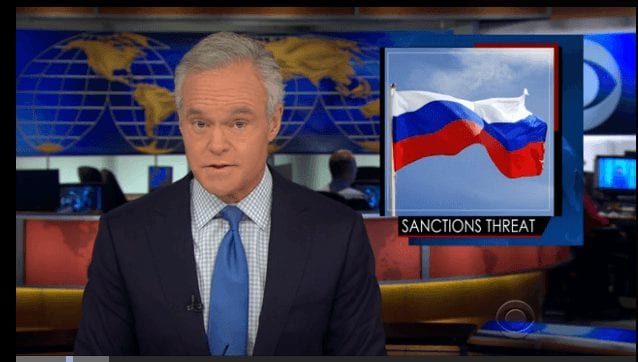
CBS anchor Pelley: Have you no decency, sir? He and his peers are the human face of a vicious and utterly hypocritical empire. At this point in history, the Western media—compromised by definition due to their allegiance to their capitalist overlords—have become little more than a huge disinformation machine pretending to impartiality.
Though the terrorist groups were often called ‘opposition, ‘militants’ and ‘Sunni groups’ outside Syria, inside the country the actual political opposition abandoned the Islamists back in early 2011. Protest was driven off the streets by the violence, and most of the opposition (minus the Muslim Brotherhood and some exiles) sided with the state and the Army, if not with the ruling Ba’ath Party. The Syrian Army has been brutal with terrorists but, contrary to western propaganda, protective of civilians. The Islamists have been brutal with all, and openly so. Millions of internally displaced people have sought refuge with the Government and Army, while others fled the country.

Mother Agnes-Mariam: “The massacres are the work of anti-Assad gangs.” No ordinary American ever heard of her. Nor what she has to say.
In a hoped-for ‘end game’ the big powers sought overthrow of the Syrian state or, failing that, the creation of a dysfunctional state or dismembering into sectarian statelets, thus breaking the axis of independent regional states. That axis comprises Hezbollah in south Lebanon and the Palestinian resistance, alongside Syria and Iran, the only states in the region without US military bases. More recently Iraq – still traumatised from western invasion, massacres and occupation – has begun to align itself with this axis. Russia too has begun to play an important counter-weight role. Recent history and conduct demonstrate that neither Russia nor Iran harbour any imperial ambitions remotely approaching those of Washington and its allies, several of which (Britain, France and Turkey) were former colonial warlords in the region. From the point of view of the ‘Axis of Resistance’, defeat of the dirty war on Syria means that the region can begin closing ranks against the big powers. Syria’s successful resistance would mean the beginning of the end for Washington’s ‘New Middle East’.
That is basically the big picture. This book sets out to document the A story and expose the B story. It does so by rescuing some of the better western traditions: the use of reason, the maintenance of ethical principle and the search for independent evidence in case of conflict. I hope it might prove a useful resource.
When the attacks on Syria abate the Middle East seems set to be transformed, with greater political will and military preparedness on the part of an expanded Axis of Resistance. That will signal the beginning of the end for Washington’s 15 year spree of bloodshed and ‘regime change’ across the entire region.
Notes:
Edwards, Dave (2013) ‘Limited But Persuasive’ Evidence – Syria, Sarin, Libya, Lies’, Media Lens, 13 June, online: http://www.medialens.org/index.php/alerts/alert-archive/alerts-2013/735-limited-but-persuasive-evidence-syria-sarin-libya-lies.html
Forte, Maximilian (2012) Slouching Towards Sirte: NATO’s War on Libya and Africa, Baraka Books, Quebec
http://www.icj-cij.org/docket/?sum=367&p1=3&p2=3&case=70&p3=5
Knightley, Phillip (2001) ‘The disinformation campaign’, The Guardian, 4 October, online: http://www.theguardian.com/education/2001/oct/04/socialsciences.highereducation
Kuperman, Alan J. (2015) Obama’s Libya Debacle’, Foreign Affairs, 16 April, online: https://www.foreignaffairs.com/articles/libya/2015-02-16/obamas-libya-debacle
Martí, Jose (1975) Obras Completas, Vol. 6, Editorial de Ciencias Sociales, La Habana
McKinney, Cynthia (Ed) (2012) The Illegal War on Libya, Clarity Press, Atlanta
Putin, Vladimir (2015) ‘Violence instead of democracy: Putin slams ‘policies of exceptionalism and impunity’ in UN speech’, RT, 28 September, online: https://www.rt.com/news/316804-putin-russia-unga-speech/
http://www.nytimes.com/1998/02/14/world/havana-journal-remember-maine-cubans-see-american-plot-continuing-this-day.html
ABOUT THE AUTHORS
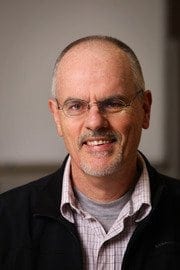 Dr Tim Anderson is a Senior Lecturer in Political Economy at the University of Sydney. He researches and writes on development, rights and self-determination in Latin America, the Asia-Pacific and the Middle East. He has published many dozens of chapters and articles in a range of academic books and journals. His last book was Land and Livelihoods in Papua New Guinea (Australian Scholarly Publishing, Melbourne, 2015). The original source of this article is Global Research
Dr Tim Anderson is a Senior Lecturer in Political Economy at the University of Sydney. He researches and writes on development, rights and self-determination in Latin America, the Asia-Pacific and the Middle East. He has published many dozens of chapters and articles in a range of academic books and journals. His last book was Land and Livelihoods in Papua New Guinea (Australian Scholarly Publishing, Melbourne, 2015). The original source of this article is Global Research
 Daniel Wirt serves as Associate Editor with The Greanville Post. He is a pathologist practicing near Houston, Texas, who considers the advanced stage of capitalism in which we live to be the ultimate public health issue — the proximate cause of the rapid destruction of the biosphere and epidemic plague of fascism afflicting humans (including the many “glad tidings of liberal fascism”, per Norman Pollack). He believes that a multipolar world is necessary for more equitable sharing of resources and more peaceful relationships among human populations. Daniel is a long-time advocate of single-payer healthcare reform in the United States.
Daniel Wirt serves as Associate Editor with The Greanville Post. He is a pathologist practicing near Houston, Texas, who considers the advanced stage of capitalism in which we live to be the ultimate public health issue — the proximate cause of the rapid destruction of the biosphere and epidemic plague of fascism afflicting humans (including the many “glad tidings of liberal fascism”, per Norman Pollack). He believes that a multipolar world is necessary for more equitable sharing of resources and more peaceful relationships among human populations. Daniel is a long-time advocate of single-payer healthcare reform in the United States.
Copyright © Prof. Tim Anderson, Global Research, 2015




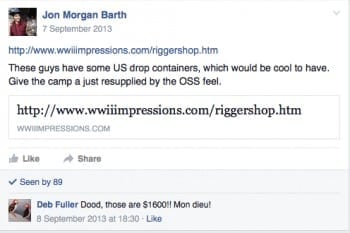
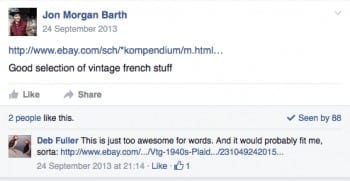













 RUSSEL BONNER BENTLEY, Senior Contributing Editor, Novorossiya Correspondent, Donbass Chronicles Most of our editors and contributors are gifted in many areas, but few merit the label of “polymath” as richly as our Novorossiya correspondent, Russell Bentley, “Texac”. He has been called poet, musician, soldier, political activist, outlaw, smuggler, convict, fugitive, philosopher, lover, teacher and friend—and, indeed, he is all those things, but his course is always guided by an unswerving commitment to the construction of a better world in which peace, genuine freedom, and social justice reign supreme. A native of Texas, Russell joined—at the tender age of 54— the Novorossiyan Armed Forces (NAF) to fight what he sees as the attack on the Donbass people by an illegitimate fascist entity: the Kiev regime installed and supported by the US after a thinly-veiled coup. His example evokes the deeds of the Lincoln Battalion, the American volunteers who fought in the Spanish Civil War. As his writing gifts abundantly prove, he also channels John Reed and Hemingway in a rare, seamless, package.
RUSSEL BONNER BENTLEY, Senior Contributing Editor, Novorossiya Correspondent, Donbass Chronicles Most of our editors and contributors are gifted in many areas, but few merit the label of “polymath” as richly as our Novorossiya correspondent, Russell Bentley, “Texac”. He has been called poet, musician, soldier, political activist, outlaw, smuggler, convict, fugitive, philosopher, lover, teacher and friend—and, indeed, he is all those things, but his course is always guided by an unswerving commitment to the construction of a better world in which peace, genuine freedom, and social justice reign supreme. A native of Texas, Russell joined—at the tender age of 54— the Novorossiyan Armed Forces (NAF) to fight what he sees as the attack on the Donbass people by an illegitimate fascist entity: the Kiev regime installed and supported by the US after a thinly-veiled coup. His example evokes the deeds of the Lincoln Battalion, the American volunteers who fought in the Spanish Civil War. As his writing gifts abundantly prove, he also channels John Reed and Hemingway in a rare, seamless, package. 